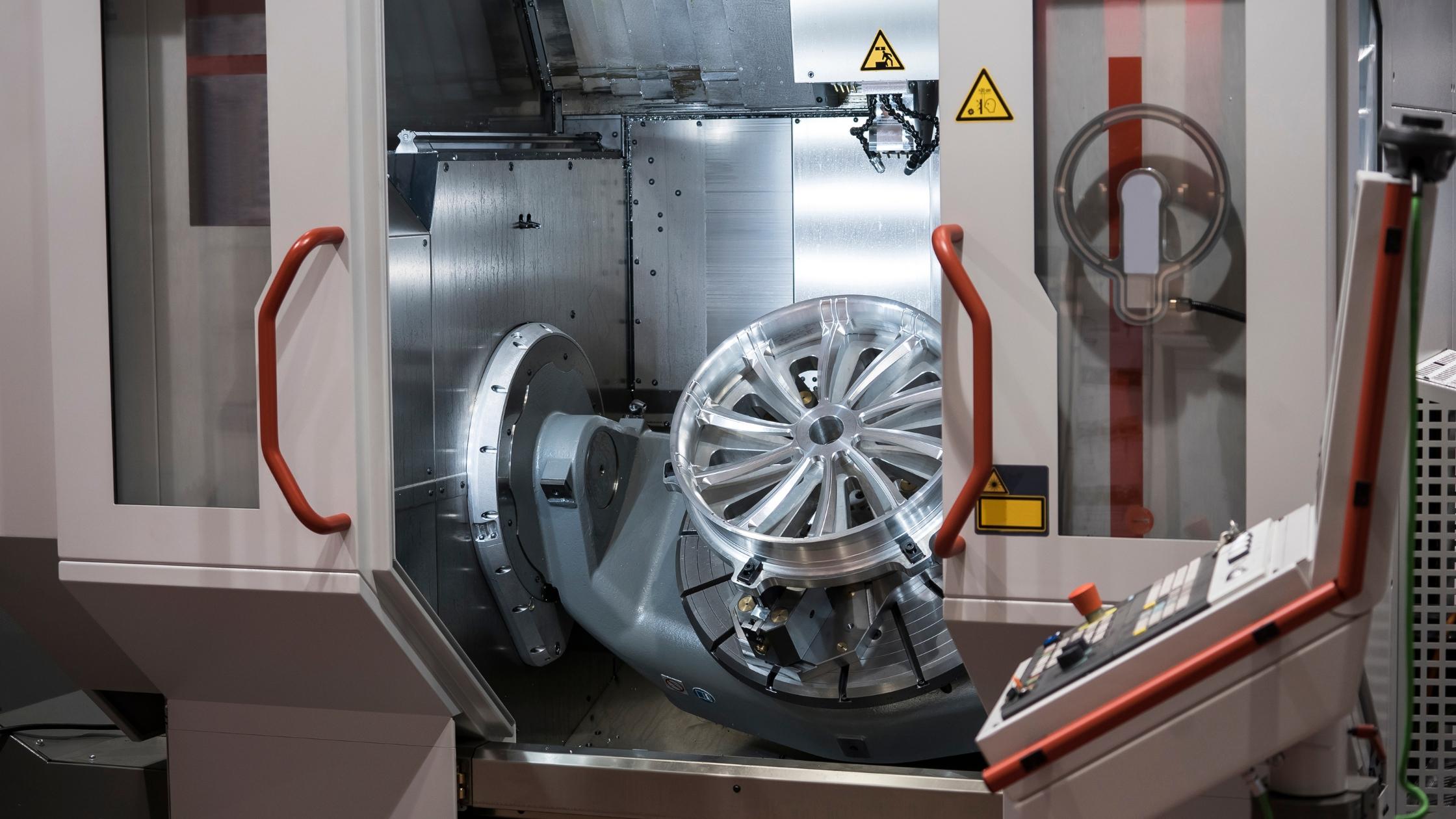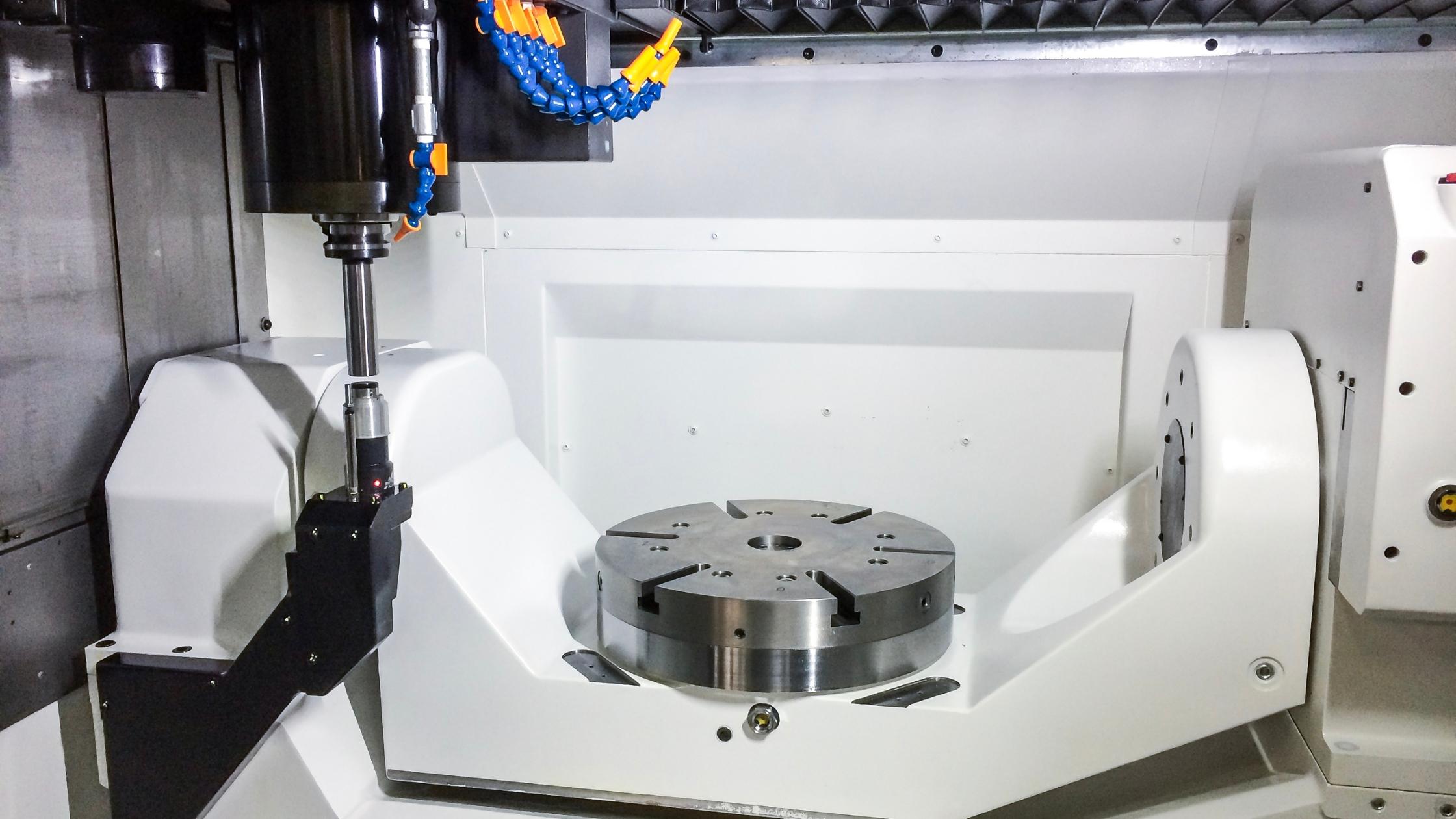
There is no doubt that CNC machining has revolutionized the manufacturing industry. It transformed how mechanical or manual production lines would perform in the 20th century. The subtractive manufacturing process is the birth of the third industrial revolution and has rightly become the bread and butter for manufacturing entities.
CNC machines and tools can perform various operations ranging from drilling to boring and tapping to shaping. The working principles of the varying CNC machines also differ from each other. One CNC machining center might be capable of performing certain operations. Similarly, the integrations of CNC machining centers also vary.
One of the hot topics regarding CNC machines is the setup in terms of axis. The CNC machines have a minimum of 3 axes, and it can increase to 4 or 5 axes. However, in today’s article, we will be exploring the 5-axis setup in the CNC machine, its working principle, practical implications, and how it is better than other integrations.

Let’s begin with defining the 5-axis CNC machines and the machining process.
A typical 5-axis machine integration means that the workpiece cutting tool can move in five dimensions. It includes the X, Y, Z, and A & C axes. Therefore, the 5-axis CNC machine adds to the three linear axis already available.
The 5-axis machining allows the fabrication of up to 5 faces in a single operation. Therefore, the operations performed with 5-axis CNC machining are even more precise and accurate than a 4-axis or 3-axis CNC machining.
The 5-axis CNC machining is very useful to create complex structures and can be done with minimal setups. Therefore, the value of 5-axis CNC machining has been increasing in the manufacturing industry with every passing day.
It is important to understand the working principle of the 5-axis CNC machining and why it is more valuable than the other integrations. However, to put it into perspective, we will need to discuss the axis in CNC machining.
So, the machining axis count is the number that describes the number of directions the cutting tool of the CNC machine can move to produce the desired results. A three-axis machine can allow movement of the cutting tool sideways(X-axis), back & forth(Z-axis), and vertically (Y-axis).
In the case of a 5-axis machine, the cutting tool can move in two additional orientations other than X, Y, and Z coordinates. The additional orientations are named as A and C. In practical terms, the additional movements allowed in 5-axis CNC machining are tilting and rotation. The tilting table axis is called the A-axis, and the table rotation axis is called the C-axis.
Now, returning to the CNC machine’s working principle, it is a multi-axis subtractive manufacturing process. The working principle behind the machining process is to eliminate the need for manual workpiece repositioning between the operations. The time-saving integration also eliminates human intervention as well.
The 5-axis machining works in integration with the CAD/CAM, as the first step is to develop the design in CAD and translate the parts in CAM. After completing the design work, the next step is uploading the G-codes into the machine and letting the magic begin.
The 3+2 principle of the 5-axis machining principally offers a 3-axis milling process with 2 additional axis that allows the holding of the tool in a fixed position without repositioning. One of the significant benefits of the 5-axis machining is that it offers tighter tolerances necessary in complex geometries.

You must be wondering who the person behind the idea of 5-axis machining. For sure, it would be someone not so happy about the repetitive manipulation of the cutting tool within and between machining operations. Let’s have a quick overview of the history of the contemporary CNC machining offered in the 5-axis process.
Rene Descartes, a French mathematician and philosopher, was the person behind the proposition of the 5-axis CNC machining. He represented the dimensions of the room along the three numbers(X, Y, Z), popularly known as the Cartesian Coordinate system. Wondering how does it relate to the 5-axis machining process?
The basis of the 5-axis system came from the initial 3-axis described by Descartes. However, the development of the 5-axis machine is on the credit of some other scientists. We will leave the name for now and move on to the advantages offered by the 5-axis CNC machines.
Here are the practical advantages of using the 5-axis CNC machining
When you’re looking to perform CNC machining processes for creating complex geometries and structures, 5-axis CNC machining is the best way out. The additional rotational axis allowed in the machine offers seamless machining at arcs and angles. Therefore, you can achieve the desired geometries within a single operation without no human intervention.
The operations performed with the 5-axis CNC machine offer very precise and accurate output compared to manual or 3-axis machining. There are minimal setup steps, no or minimal human intervention, and reduce the possibility of errors.
Unlike the conventional 3-axis machines, you do not have to undergo multiple setups before performing the operations in the 5-axis CNC machines. Since the 5-axis machines allow working on 5 surfaces simultaneously, the single structure can perform machining, eliminating the need for setup operations.
The 5-axis machining reduces the parts’ machining time and auxiliary time. The high speed, precision, and feed range allow the powerful large cutting capacity. The overall production efficiency of the 5-axis CNC machining is better than the 3-axis or any other CNC machining. Besides, the smooth surface finish and high cutting speed also add to the higher efficiency.
We have shared everything you need to know about the 5-axis CNC machining and how it works. There is a further segregation of the 5-axis CNC machines that are head/head, head/table, and table/table integration. In head/head integration, the rotational axes are located in the head; the head/table has one rotational axis in the head and another in the rotary table. Similarly, the table/table setup has rotational axes in the rotary table. In some other blog posts, We will discuss the 5-axis machine setups in detail.
Do let us know what you think about the productivity of the 5-axis CNC machines.